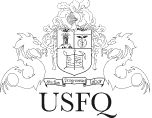http://repositorio.usfq.edu.ec/handle/23000/407| Tipo de material: | bachelorThesis |
| Título : | Aplicación del cementerio del Batan: arquitectura de un retorno |
| Autor : | Ordóñez Sáenz, Sebastián |
| Director de Tesis : | Banderas, Marcelo, dir. |
| Descriptores : | Cementerios - Arquitectura - Quito (Ecuador);Cementerios - Diseño y construcción |
| Fecha de publicación : | may-2008 |
| Editorial : | Quito: USFQ, 2008 |
| Citación : | Aplicación del cementerio del Batan: arquitectura de un retorno |
| Páginas : | x, 75 h. : il. |
| Acceso: | openAccess Atribución-NoComercial-SinDerivadas 3.0 Ecuador |
| Resumen : | El proyectar un cementerio conlleva analizar un sin número de factores, sociales, culturales, históricos y políticos. Más importante aun trata el tema de la muerte, el fin de la vida. Se convierte así en un espacio lleno de simbolismos, extremadamente representativo. Se lo puede describir como un espacio descubierto y cerrado designado para recibir cadáveres. Etimológicamente la palabra cementerio viene del griego, Koimeterion, lugar de reposo. Los cementerios son representativos de toda una sociedad, de su cultura, de su manera de afrontar la vida, y por lo tanto, la muerte. |
| Descripción : | When you design a cemetery you must consider many factors such as social, cultural, historical and political background of the society that is intended to serve. We must understand the relevance of the theme that we are treating, dead, the end of life. Cemeteries are spaces full of symbolism, extremely representative of the culture itself. We can describe these places as an defined space, roofless, designed to receive dead bodies. Etymologically, the word comes from the ancient Greek, Koimeterion, which means a place to rest. Cemeteries are representative of the whole society, its culture, its way of facing life, and, therefore is way of facing dead. |
| URI : | http://repositorio.usfq.edu.ec/handle/23000/407 |
| Aparece en las colecciones: | Tesis - Arquitectura |
| Fichero | Descripción | Tamaño | Formato | |
|---|---|---|---|---|
| 87684.pdf | TESIS A TEXTO COMPLETO | 6.83 MB | Adobe PDF |  Visualizar/Abrir |
Este ítem está sujeto a una licencia Creative Commons Licencia Creative Commons


